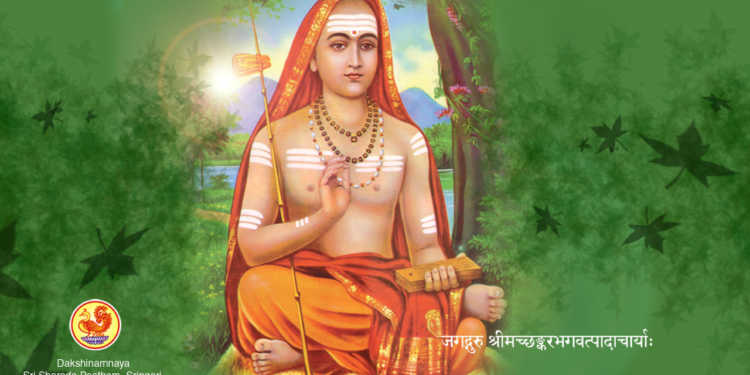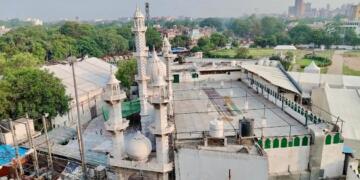I have no hatred, nor passion, I have no greed, nor any delusion
I have no haughtiness, nor any envy, or any competitive feeling
I have no Dharma, Artha (Wealth), Kama (Desire), or Moksha (Liberation)
(* the four Purusharthas)
I am but the eternal knowing and bliss, the pure consciousness, Shiva, I am Shiva..
न मे द्वेषरागौ न मे लोभमोहौ
मदो नैव मे नैव मात्सर्यभावः ।
न धर्मो न चार्थो न कामो न मोक्षः
चिदानन्दरूपः शिवोऽहम् शिवोऽहम् ॥३॥
~ Atma (or Nirvana) Shatakam verse 3 by Jagadguru Sri Adi Shankaracharya
Shankara was born in the eighth century AD in a small village in Kerala, called Kalady, near the banks of the river Periyar, to Sivaguru and Aryamba. The legend goes that, for a long time they did not have any progeny, and they worshipped Lord Shiva of Vadakkunatha temple in Trissur, who appeared in their dream and asked them “Do you need a stupid son who can live for 100 years or a very intelligent son who could contribute a lot to this world but will live only for 16 years?”. They both opted for the latter, and thus Shankara was born to them.
At a very young age itself, Shankara learnt all the Vedas and Shastras, and expressed his wish to become a Sanyasi and became the Shishya of Sri Govinda Bhagavatpada (who was a Guru in the direct lineage of Sage Vasishta, Parashara, Veda Vyasa and Shukacharya).
Later impressed by Shankara’s works and commentaries on various Vedic scriptures and Sutras, Veda Vyasa himself appeared before him and prolonged his age from 16 to 32.
In a short span of life of 32 years (788 to 820 AD), the Jagadguru travelled the entire length and breadth of this nation and unified this whole country through his non-dualistic philosophy called Advaita Vedanta and brought back the glories of our Sanatana Dharma. He debated with Meemansaks, Charvakas, Bauddhas, and Jainas, and defeated them in such debates to establish Sanatana Dharma to its full glory such that, people believe Bhagawan Sadashiva himself took avatar as Shankara, and Brahma as Mandana Mishra his disciple, Sureshwaracharya and Vishnu as his disciple Padma Pada. He had two more principal disciples, Hastamalaka and Totakacharya. He established four Amnaya peethas in Puri, Badrikashram, Dwaraka and Sringeri and made each of his four disciples in charge of these Peethas to continue his legacy and to practise Sanatana Dharma and Advaita Vedanta.
Today (Shukla paksha panchami thithi of Vaishakha) is his Jayanti and the above shloka is from the six stanza (shatakam) that he narrated to his guru Govinda Bhagavatpada when his guru asked him who he was.






























